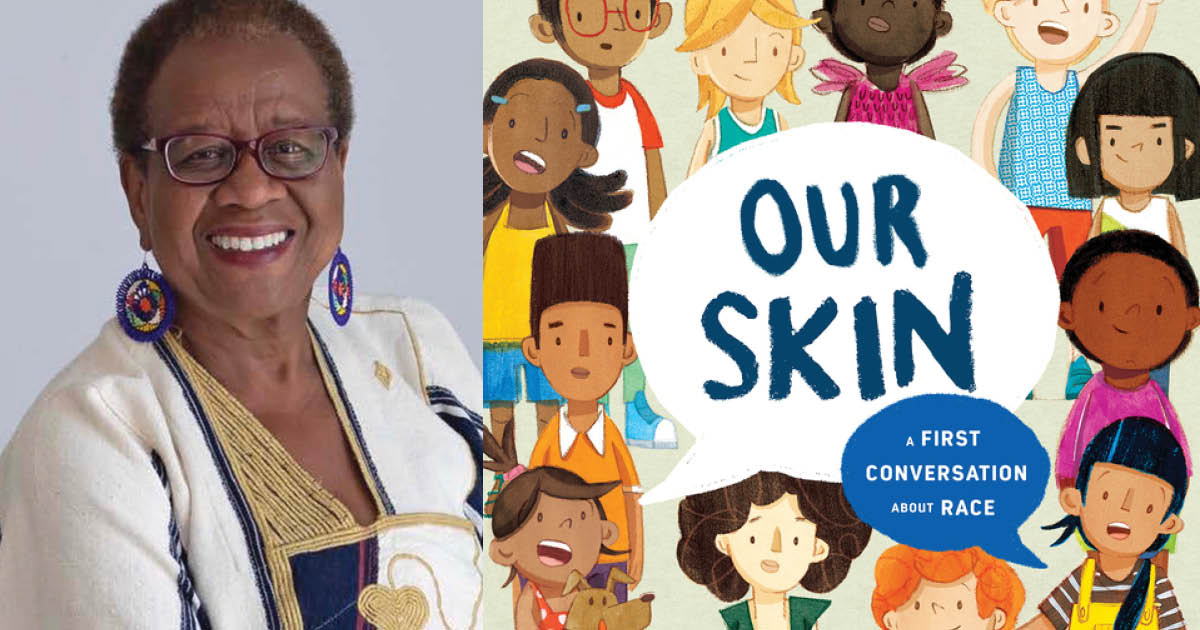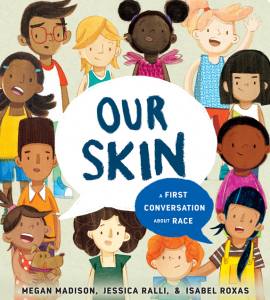
To prepare parents to discuss racism in the United States with their children, internationally renowned anti-racist educator Dr. Enid Lee recommends the board book Our Skin: A First Conversation About Race by Megan Madison, Jessica Ralli, and Isabel Roxas.
Lee, a Teaching for Change advisor, shares how she introduces the book to parents in the three minute film clip below.
Transcript
My name is Dr. Enid Lee and I still work in antiracist education. Among the services that I’m able to provide are those having to do with working with parents who want to make sure that they are preparing their children for a more just society. This particular example that I want to share has to do with some parents at a dual bilingual school in California, and the parents who come to that are mostly white parents.
 But the book that I decided to share was [Our Skin] by Megan Madison and her colleagues. Because people think of it as a children’s book, and just the way the book is designed one would think of it that way, but I decided to introduce the book to the parents and I said,
But the book that I decided to share was [Our Skin] by Megan Madison and her colleagues. Because people think of it as a children’s book, and just the way the book is designed one would think of it that way, but I decided to introduce the book to the parents and I said,
This is the sort of book that you can use with your children. And by the way, the book is available in Spanish, too.
That’s good for that school, but it’s also excellent for parents. It shows how books that we say are children’s books are important for all of us.
One of the ways I used this book was, I’ve started reading it to them and saying,
Write down the questions that come to mind when you’re reading this to your kids and try to find the answers of what you would say.
And this one really got us going on history. In the middle of the book, there’s this statement — and I think it is wonderful — it says,
A long time ago, way before you were born, a group of white people made up an idea called race.
There you have it, in straightforward children’s language, an invitation to explore the history of race.
So, I said to the group sitting there with pen in hand,
Write down what you would say if your kid says to you, “Well, who are these people? Why did they think of it?” and so forth.
That then led us to talk about the need for us as adults to understand the history of the idea of race, and so forth. I then told them that if they were keen they could use one of my favorite books, which is The Ideology of Racism [by Samuel Kennedy Yeboah]. I like this book; it’s quite worn.
But the point is that if you’re going to be reading this book to your kids, you better have some answers as to who these people were and how they still show up in the ways we work. That was a good way of introducing the importance of the history of race, both to adults and to younger people, and it got quite a few people going. Some people in the group thought they knew the answer. Some said, “Never thought of it,” and they asked, “Where can we find it?” Because in doing workshops, I like to assume that people know what is going on so they don’t feel spoken down to. I usually say, “As we know, such and such,” and by the time I’m halfway through the session, they come up to me and say, “Enid, we do not know this. Where can we find these things?” I find that’s the best way of getting the topic in.
So I just want to congratulate Megan and her colleagues for that, because this book and that question have got us talking about race in children’s books and adults. That’s why I like this book. I don’t know who else uses it like that.
There were teachers at the parent meeting who said, “Oh, we’re going to use it like that, too, in kindergarten, first grade, and so forth.” Because it’s a reasonable question and we want children who will ask questions.
Spanish edition available: Nuestra piel: Una primera conversación sobre la raza
Leave a Reply